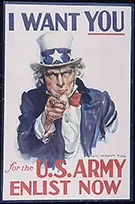War in Europe
While there were many things that led up to World War II, it officially began in Europe on September 3, 1939. On this day, Britain, France, Australia and New Zealand all declared war on Germany. Two days before, on September 1, Germany marched into Poland and declared it was German territory.
This came just six days after Neville Chamberlain, the Prime Minister of Britain, signed a treaty to protect Poland. This set the war machine into motion and launched a war that lasted six years and killed more than 55 million people, almost 3% of the world population. While there are thousands of ways that the Allied powers fought the war, several stand out.


he Miracle of Dunkirk. In the early days of the war, British and French forces fought the German army in France. In May of 1940, German forces surrounded soldiers from Britain, France and Belgium near Dunkirk in France. Almost 400,000 men were at risk. England sprang into action. First, British High Command got news to the troops to fight to the beach near Dunkirk.
Then, using naval vessels, fishing boats and even small dinghy’s, British soldiers and average men, women and even teenagers floated the troops to safety on the English shore. This was all done at night, with no lights to prevent German pilots from seeing the operation and bombing the boats. In all, the British people rescued more than 340,000 soldiers.

The London Blitz. Beginning September 7, 1940, Germany bombed London every night for 57 nights. After the first blitz, Germany continued to bomb London for the next six months. The German military felt that this would destroy the city. The people would become terrified and lose heart. Germany hoped that the English people would turn on each other and their government, making surrender easy. But that didn’t happen. Instead, the English took measures to protect themselves.
They opened subway tunnels and basements as shelters from the bombs. They passed laws against lights so that the city would be invisible to passing airplanes. The British Airforce floated barrage balloons over the city. These giant balloons held explosives. Planes that flew low enough to see the city would get caught in the balloon’s tethers and the explosives would blow up the plane before it could bomb the city.

The Siege of Leningrad. Even though Adolf Hitler and Josef Stalin signed an agreement when they split Poland in 1939, that agreement didn’t last. In 1941, German forces began attacking the Soviets. In September 1941, German troops cut off the city of Leningrad from the rest of the country.
German forces would not let food, clothing or firewood into the city hoping to starve the citizens into surrender. However, Josef Stalin would not allow that to happen. Germany cut off the city for 872 days. That is two years and four months without food or fuel. While under siege, more than a million people died because of hunger and cold.

Rationing. Britain understood that soldiers needed many things. They needed food, clothing, boots and weapons. They needed metal for airplanes and oil for fuel. Britain is a large island. They cannot drive to other countries. The government knew that Germany was patrolling the seas. This made it difficult for Britain to rely on other countries for supplies. So, they made sure that they saved the supplies they had.
This meant that many people could not buy the things they wanted. Instead, the government issued ration books. The books had stamps that allowed people to buy things like meat, sugar, clothing and shoes. When the United States entered the war, they saw the value of rationing and used the same program. People weren’t happy about rationing. But the government showed the people how important ration books were to the war effort.

D-Day. In December of 1942, the United States joined Britain in World War II. Together, with other European allies, the United States and Britain worked to stop Germany’s expansion. Then they began to start pushing German forces out of land they took. In 1944, British and US forces planned a huge attack on German forces in France.
They planned the attack to begin on a night when the moon was dark. So on June 6, 1944, shortly after midnight, more than 24,000 American, British and Canadian troop began landing on the beach at Normandy. These men fought their way onto the land and then defeated the German soldiers stationed there. This battle turned the tide of the war and paved the way for an Allied victory on May 7, 1945.



